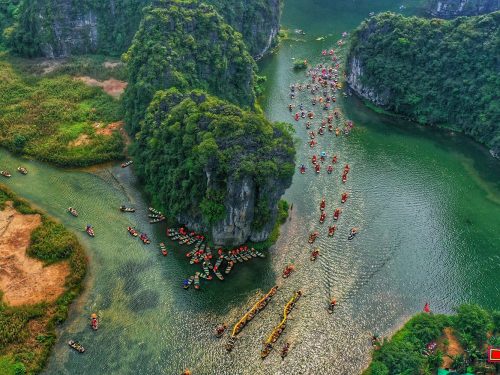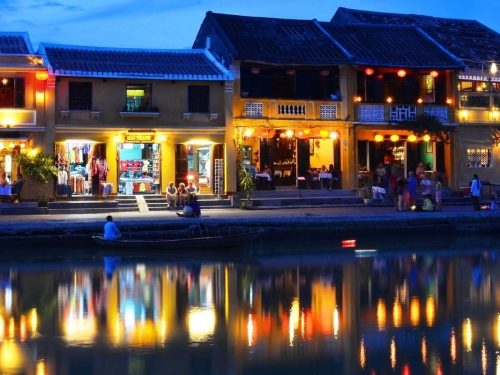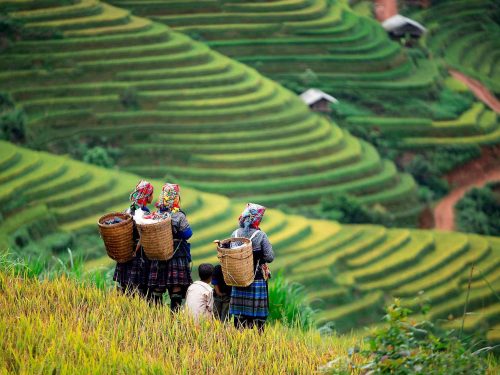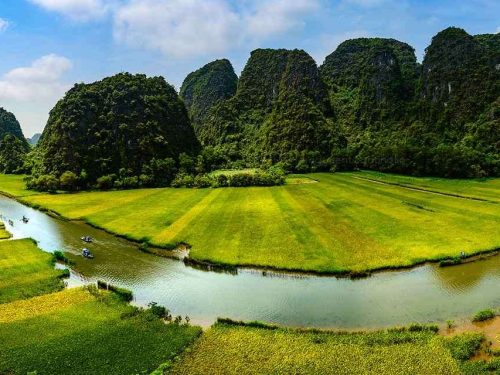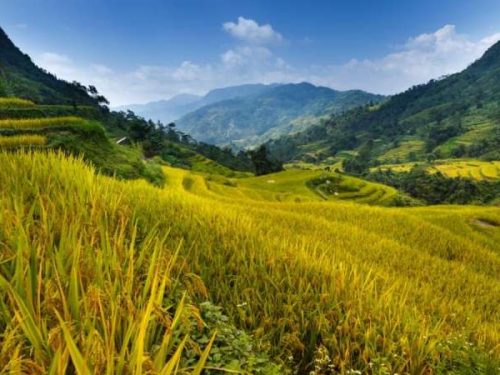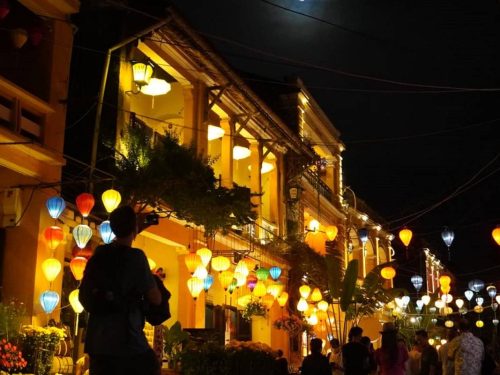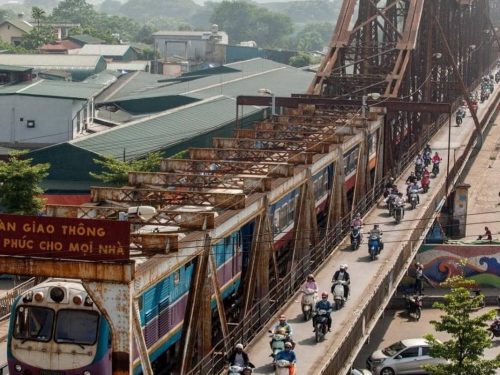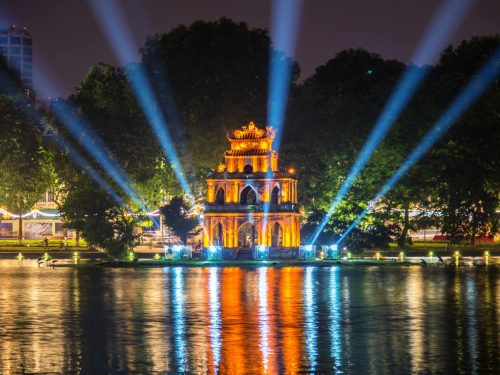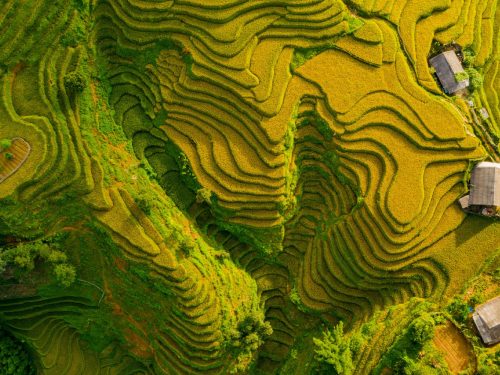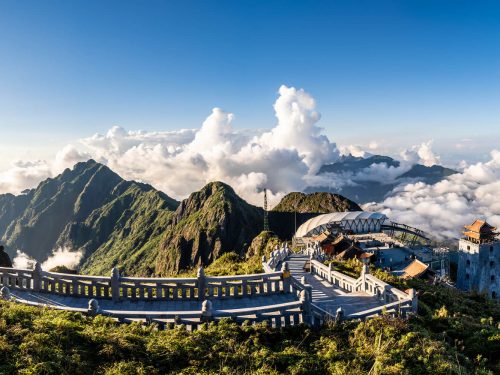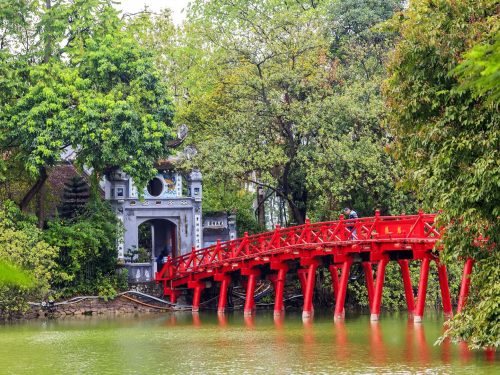Sapa
Explore Sapa Highlights Tours with Indochina Today Travel
Sapa town
Sapa town is located in Lao Cai province, with a terrain of 1600 meters above sea level. The cool mountain climate and beautiful wild landscape are the factors that make Sapa a famous resort in Northern Vietnam. In addition to the terraced fields in the ripe rice season, Sapa also attracts visitors thanks to the beauty of many other destinations. Traveling to Sapa, you will have the opportunity to conquer the famous Fansipan peak. A place of backpacking trips with villages hidden in the mist to a natural landscape of hundreds of blooming paintings that make visitors feel moved when thinking about it.

Ham Rong Mountain
Ham Rong Mountain belongs to the famous Hoang Lien Son range. This place is famous for its diverse forest ecosystem. From the top of the mountain, you can see most of the famous tourist attractions of Sapa town such as Muong Hoa valley, Ta Van village, Cat Cat village…

Sapa Stone Church
This is a symbolic work of the mountain town, started in 1895. The church was built in the shape of a cross in the Gothic style, expressed in the roof, bell tower, arches… all in the shape of a pyramid, creating a graceful and airy look for the work.

Ta Phin Village
About 15km northeast of Sapa town. In contrast to the bustling and noisy life of the city, Ta Phin village has a gentle and peaceful beauty. This is an ideal place for those who want to immerse themselves in the land and sky. With its wild and peaceful beauty, Ta Phin is the main residence of two ethnic groups with extremely colorful costumes, the Dao and the H’Mong – a popular ethnic group in the Northwest mountains of Vietnam.

Cat Cat Village
Cat Cat village is located 2 km from the center of Sa Pa, so you can choose to trek or ride a motorbike. This is a peaceful Mong village, still preserving many customs and traditional crafts such as weaving, silver carving, jewelry making..
The road to the village is quite beautiful, you will go through winding hairpin bends, on both sides are terraced fields with ethnic roofs peeking out. Crossing Si bridge is the center of Cat Cat village, where three streams converge: Tien Sa stream, Vang stream and Bac stream.

Weekly Minority Market
Nothing better than a market to learn about local culture in Sapa. Life has changed much for ethnic minority people here yet the best of their tradition is still presented in weekly markets around Sapa. Take a look at some exotic goodies offered at the markets as well as the colorful costumes of friendly ethnic people.

Mount Fansipan
Fansipan is the highest peak in Indochina. Trekking to remote villages around the foot of the mountain is an interesting activity to do in Sapa. Hiking the peak is challenging though today it’s much easier to reach the top on a cable car. The breathtaking view is what to offer visitors once they get to the top.

Heaven Gate
Northwest of Vietnam is best known for its imposing passes. One of the most visited is Tram Ton pass often depicted as the gate to Heaven. The Tram Ton Pass flanks the northern side of Mount Fansipan, located 15km from Sapa. With its altitude of 1900m, the Heaven Gate is the highest pass in Vietnam. The reward for visiting the top of Tram Ton pass is the spectacular view of the landscape of the Hoang Lien Son Mountain range.
TRAVEL TIPS FOR SAPA
Sapa’s blend of stunning landscapes, rich culture, and unique experiences makes it a must-visit destination in Vietnam. Whether you’re trekking through Sapa rice terraces, mingling with local ethnic groups, or simply soaking in the fresh mountain air, Sapa travel offers a journey unlike any other.
1. Applied Evisa
Before your trip to Hanoi, Vietnam, it’s important to check if you need a visa. If you’re not on the visa exemption list, you have three options for obtaining one: an E-visa, a Visa on Arrival (VOA), or a standard visa from a Vietnamese embassy. Each option has its own specific regulations and procedures to follow.
- E-VISA
An electronic visa (E-visa) is a type of visa issued to foreigners by the Vietnamese Immigration Department through an electronic system. The Vietnam E-visa is valid for a maximum of 90 days, allowing for single or multiple entries.
Foreigners outside Vietnam who wish to enter the country can apply for the E-visa personally or through designated agencies and organizations. - VOA (Visa on Arrival)
Vietnam visa on arrival is available for travelers who want to enter Vietnam without a visa issued by an embassy or consulate beforehand. - Apply for a Visa at a Vietnamese Embassy or Consulate
If you are near a Vietnamese embassy or consulate, you can personally submit your application materials.
2. Best Time to Visit Sapa
- March to May (Spring):
Spring is an excellent time to visit Sapa, with warm, pleasant weather and clear skies. Temperatures range between 15-25°C (59-77°F), making it ideal for Sapa trekking tours and exploring the rice terraces. - September to November (Autumn):
This is the rice harvest season, when the Sapa rice terraces turn golden yellow, offering the most stunning views of the countryside. The weather is cool and comfortable. - Winter (December to February):
Sapa gets cold in winter, with temperatures sometimes dropping below 0°C (32°F). Snow is rare but possible at higher altitudes. This season offers a unique charm for those wanting to see misty mountains or snow.
Avoid June to August, as this is the rainy season, which can make trekking dangerous due to slippery trails.
3. How to Get to Sapa
From Hanoi:
- Train: Take the overnight train from Hanoi to Lao Cai (the nearest city to Sapa). From Lao Cai, it’s a 1-hour bus or taxi ride to Sapa.
- Bus: Several sleeper and luxury buses run directly between Hanoi and Sapa, offering a faster and more budget-friendly option.
- Private Car: For a more comfortable and scenic journey, you can hire a private car or van.
4. Where to Stay in Sapa
- Homestays:
For an authentic experience, staying in a Sapa homestay is highly recommended. Villages like Ta Van and Lao Chai offer simple yet comfortable accommodations, allowing you to immerse yourself in local life. This Sapa homestay experience is perfect for travelers who want to connect with local culture. - Hotels and Hostels:
If you prefer staying in town, there are many hotels and hostels with stunning views of the mountains. - Luxury Resorts:
For those seeking luxury, resorts like Topas Ecolodge provide an upscale experience with breathtaking views of the Sapa rice terraces.
5. Getting Around Sapa
- On Foot: Exploring Sapa on foot is a great way to take in the town’s beauty and the surrounding areas.
- Motorbike: You can rent a motorbike to explore areas like Cat Cat Village and Ta Van, but be cautious on the steep and winding roads.
- Local Guides: Hiring a local guide for your Sapa trekking tours into remote villages is highly recommended. They can offer insights into the culture and lifestyle of the ethnic minority groups.
6. Must-See Attractions in Sapa
- Fansipan Mountain (“The Roof of Indochina”):
At 3,143 meters (10,312 feet), Fansipan is the highest peak in Vietnam. You can either trek or take the cable car to the summit for stunning views of the valleys and Sapa rice terraces. - Cat Cat Village:
A traditional H’mong village just 2 km from Sapa town, known for its waterfalls, traditional houses, and craft shops. It’s a great way to experience the Sapa homestay experience and learn about the H’mong culture. - Muong Hoa Valley:
Famous for its breathtaking rice terraces and picturesque villages, this valley is best explored through Sapa trekking tours.
7. Trekking in Sapa
- Short Treks:
For those with limited time, a half-day or full-day trek to Cat Cat Village or Lao Chai is a great option, offering scenic views of Sapa rice terraces and local life. - Multi-Day Treks:
For a more immersive experience, opt for a 2-3 day trek through the Sapa rice terraces, staying overnight in homestays in local villages like Ta Van.
8. Ethnic Minority Groups
- H’mong: The largest ethnic group in Sapa, known for their intricate embroidery and unique traditions.
- Red Dao: Famous for their herbal medicinal baths, which are a must-try for visitors after long Sapa trekking tours.
9. Sapa Cuisine: Must-Try Dishes
- Grilled Street Food:
In the chilly evenings, the streets of Sapa are filled with vendors grilling everything from pork skewers to sticky rice. It’s a great snack after a day of exploring or trekking. - Sapa Salmon:
Farmed in the cool waters of Sapa, salmon is often served grilled or in hotpot form.
10. Cultural Etiquette
Respect local customs, especially when visiting ethnic minority villages. Always ask for permission before taking photos of people, and avoid entering homes uninvited.
11. Packing Tips
- Clothing:
Layered clothing is essential due to the changing weather. A good jacket, rain gear, and sturdy trekking shoes are recommended for Sapa travel. - Trekking Gear:
If you’re planning Sapa trekking tours, ensure you have proper shoes, a hat, sunscreen, and a lightweight backpack.



